The Iridescent Elegance of Victorian Mother-of-Pearl Book Bindings
For a few years in the 19th century, books bound in covers glistening with mother-of-pearl were a gift-giving sensation.
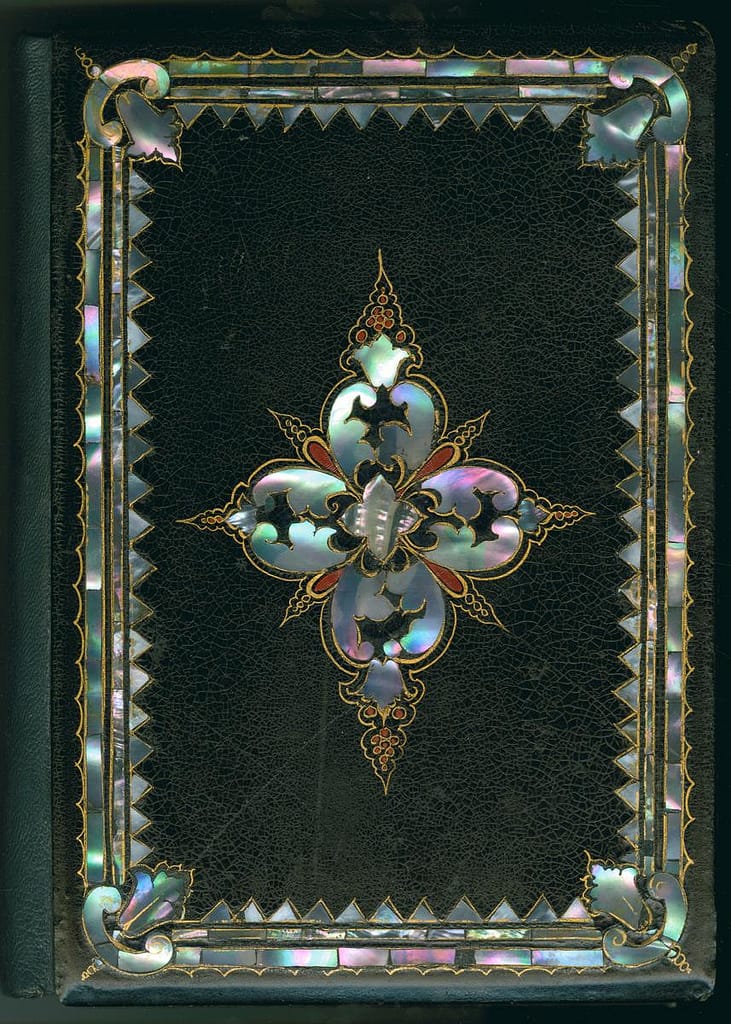
For a few years in the 19th century, books bound in covers glistening with mother-of-pearl were a gift-giving sensation. Victorians were enamored of papier-mâché, that easily shaped paper pulp medium, and used it for snuff boxes, furniture, and even pre-fabricated housing. Mostly made in New York, papier-mâché books adorned with mother-of-pearl were part of a gift book fad, wherein a decorative tome of sentimental or religious poetry was bestowed upon a loved one, often around the winter holidays. The text was usually secondary to the gaudy cover, which was decorated to the extreme.
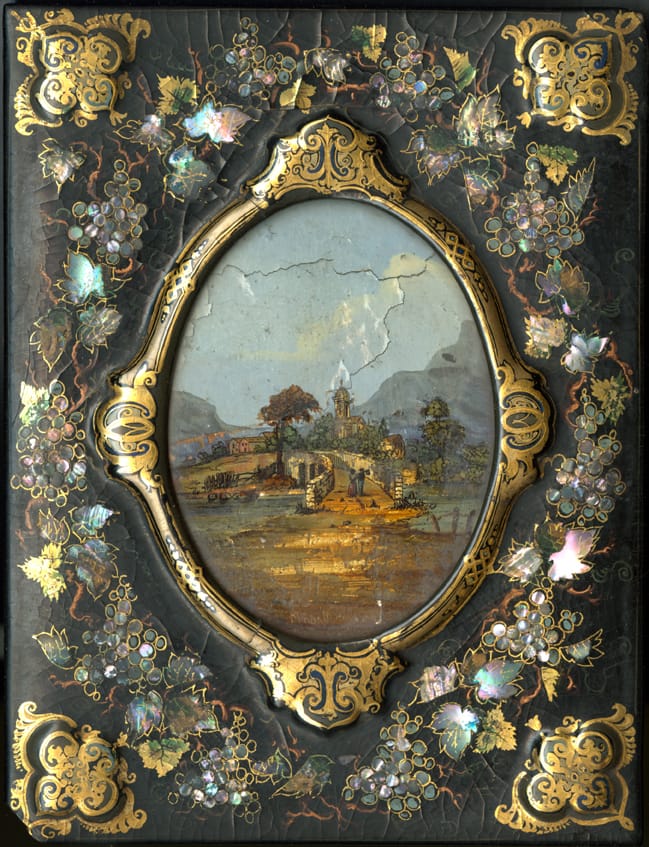
The Library Company of Philadelphia has a thorough online database of 19th-century book bindings (which we heard about through a blog post from the Alcuin Society, a Canadian nonprofit for the “appreciation of beautifully produced books”). With almost 50 papier-mâché examples and eight portfolio covers, it’s one of the world’s best of such collections. Ornate bookbinding was hardly uncommon in the Victorian age, such as these beautifully embossed natural history books, and papier-mâché isn’t even close to the strangest style — this was, after all, the same century that saw books bound in human skin. But the mother-of-pearl embellishments, made from mollusk shells, represent an intriguing moment in decorative arts, a peak in bookbinding popularity, from which the practice would go on to slump like so much wet paper.
The Library Company notes that the bindings “appeared on American books only briefly — around 1850-55 — a time of increasingly elaborate book cover decoration.” The use of inlaid shell on books wasn’t new; tortoise-shell bookbinding existed in the 17th century, for example. However, the mother-of-pearl details on the papier-mâché bindings brought this shining, some may say garish, elegance to the consumer market.
Many of these examples are embedded with iridescent flowers; others have mother-of-pearl accenting pastoral vistas, echoing the popular romance of nature at the time. Oddly, nautical scenes doesn’t seem to have been too common, perhaps to avoid reminding viewers of the slimy invertebrates that once resided in the beautiful shells. While there hasn’t been a significant amount of research on this moment in publishing, Jennifer W. Rosner, chief of conservation at the Library Company of Philadelphia, did publish a 2013 essay on these book bindings in Suave Mechanicals: Essays in the History of Bookbinding, Volume 1.
Below are some selections from the Library Company of Philadelphia’s collection of papier-mâché book bindings, many donated by rare book collector Michael Zinman. More can be found on Flickr.
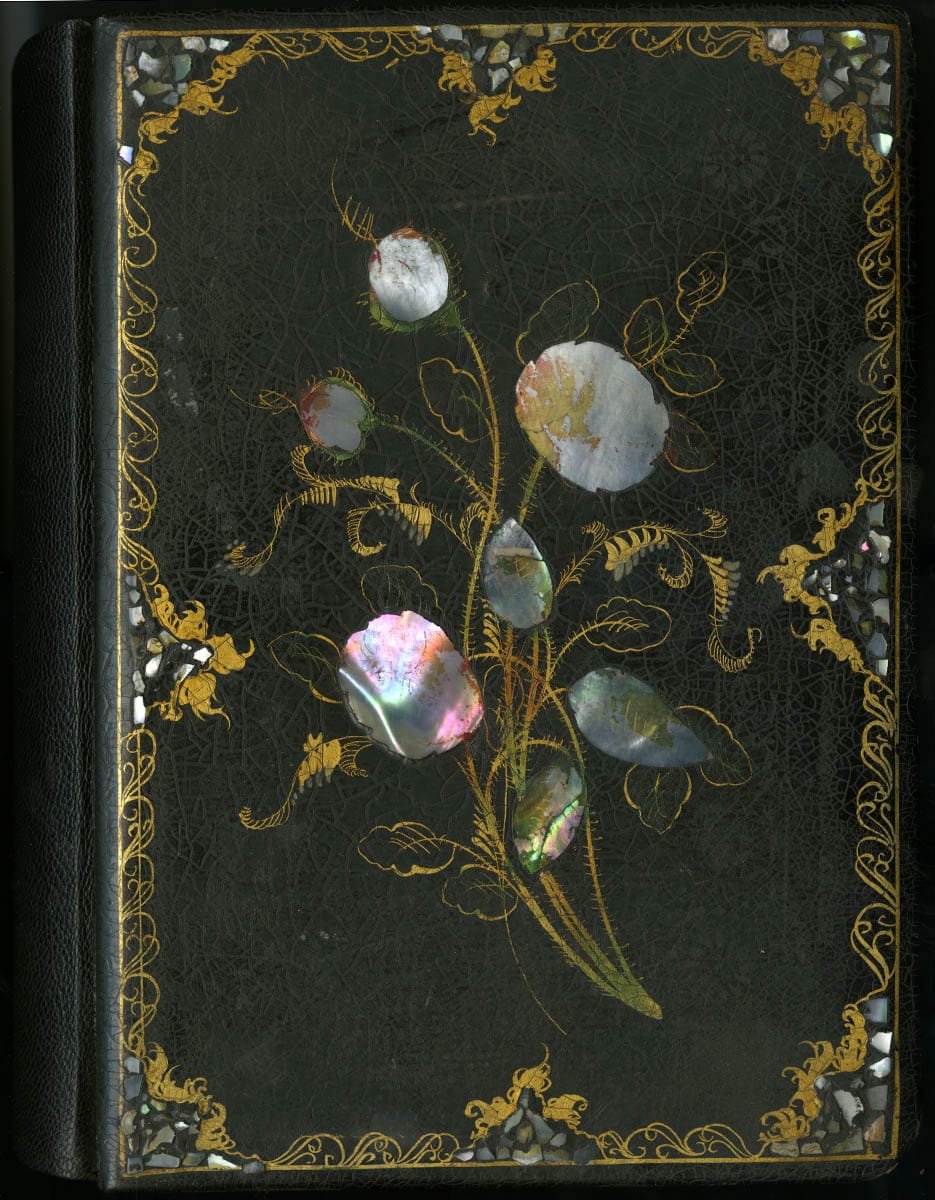
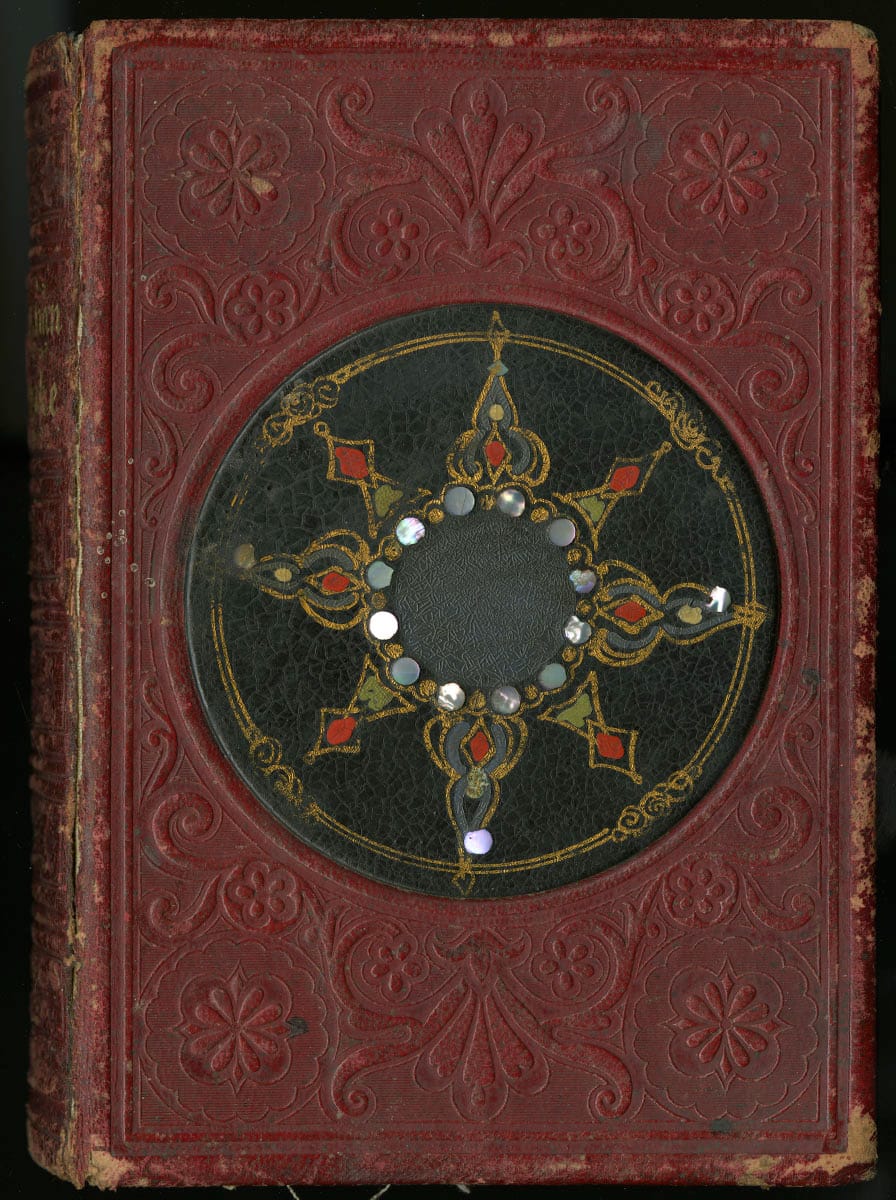


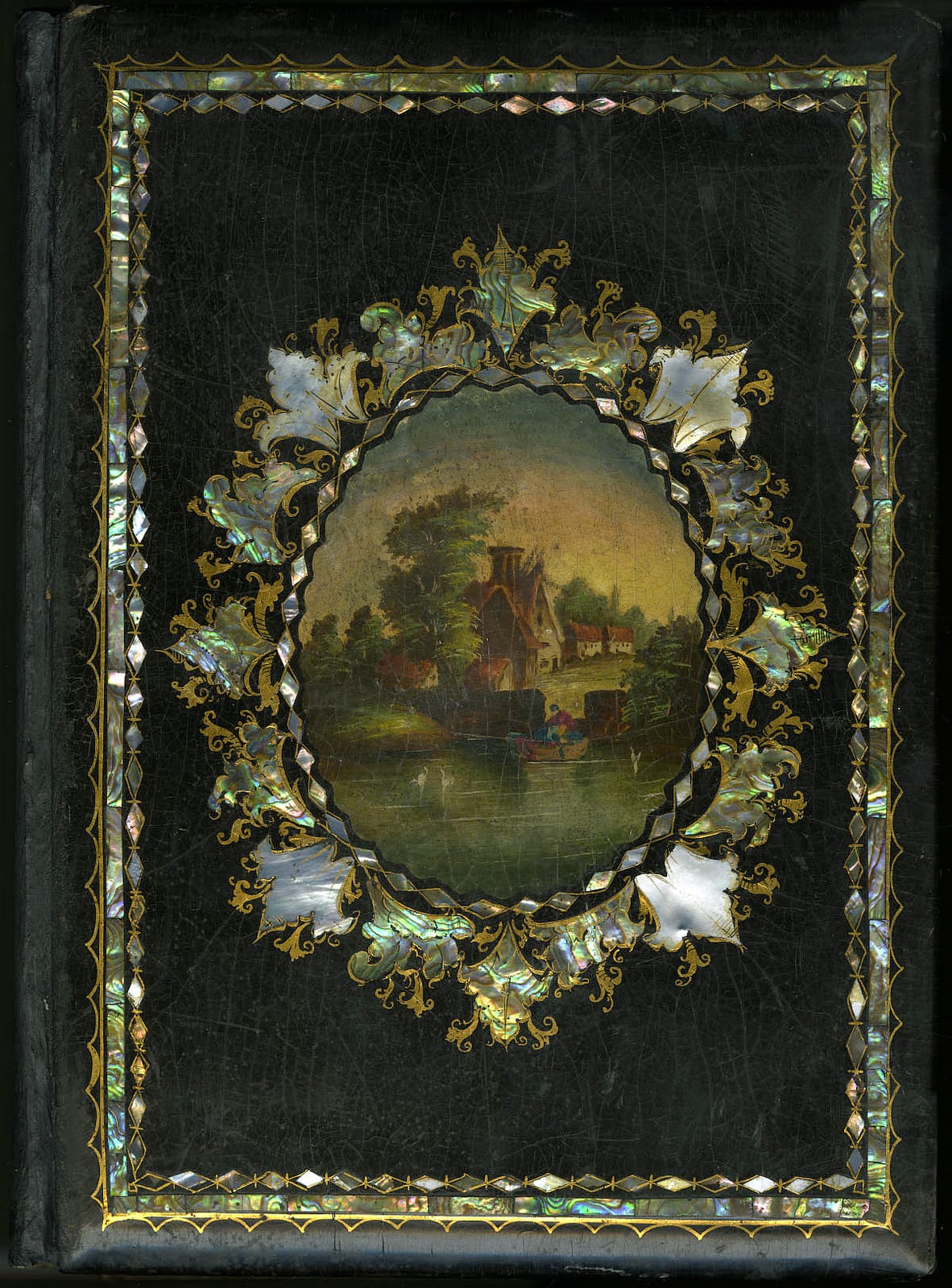
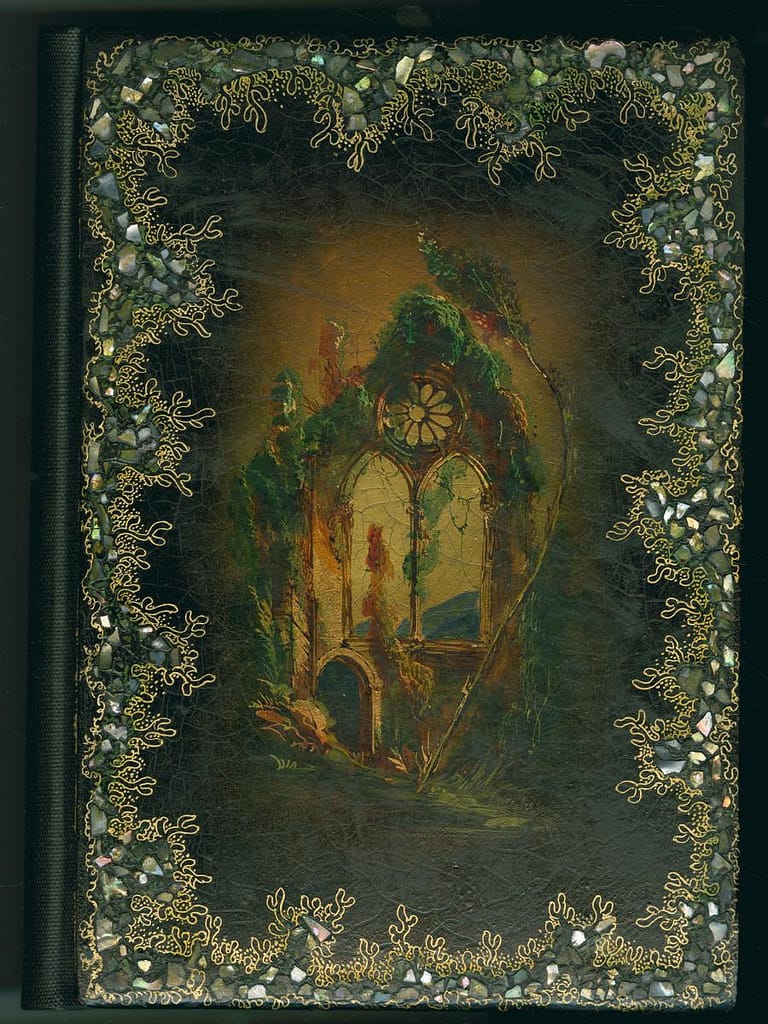
!["Friendship's Token" (New York: Leavitt & Allen, [n.d.]) (via Library Company Conservation Dept.)](https://hyperallergic.com/content/images/hyperallergic-newspack-s3-amazonaws-com/uploads/2015/02/motherofpearlbook7.jpg)
!["The Emblem: A Gift for All Seasons" (New York: Leavitt & Allen, [n.d.]) (via Library Company Conservation Dept.)](https://hyperallergic.com/content/images/hyperallergic-newspack-s3-amazonaws-com/uploads/2015/02/motherofpearlbook9.jpg)






